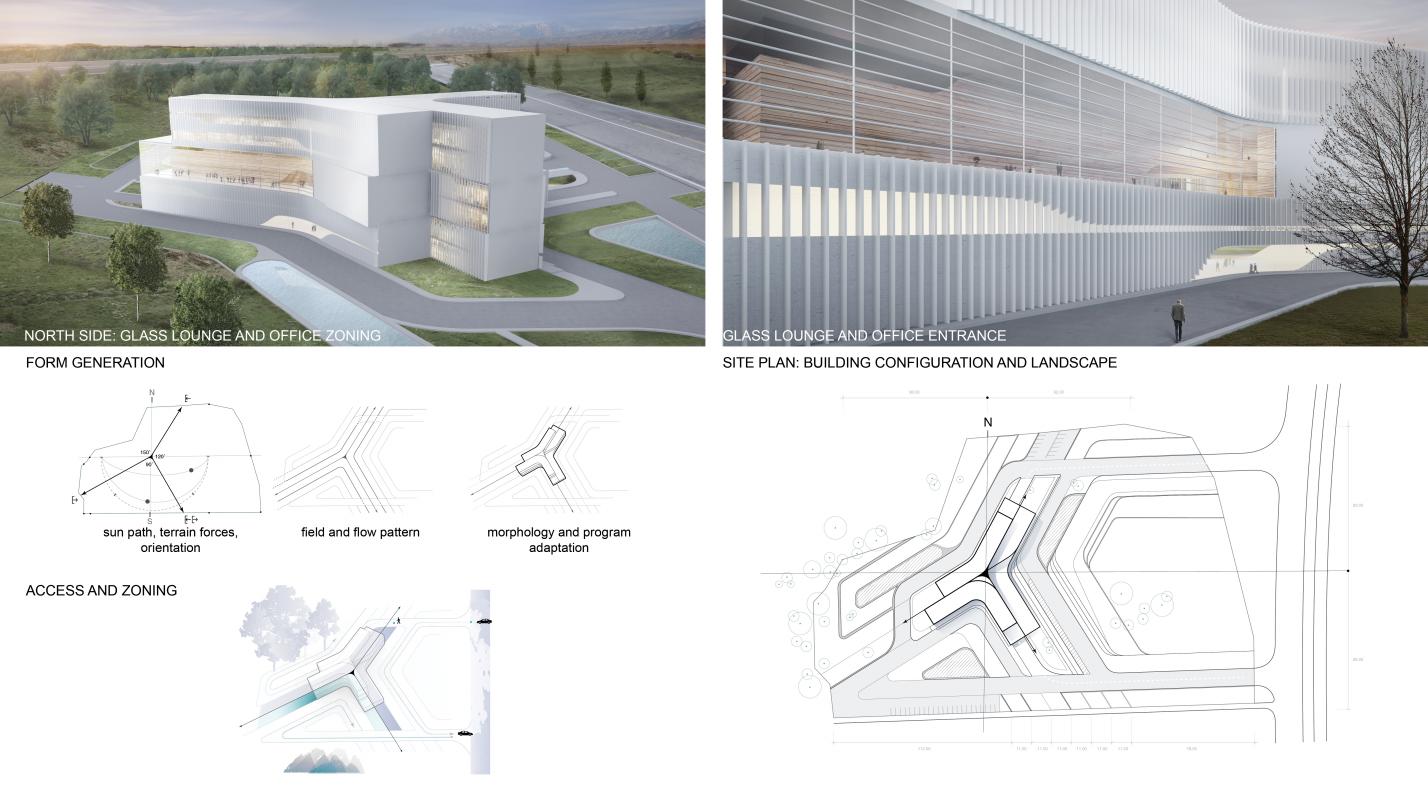Hamedan Chamber of Commerce
Persian art and architecture is heavily influenced by mathematical geometry and geometric patterns. Few, if any notable works in traditional Persian design exist ou outside a geometric framework. From an analytical perspective, w we understood that the formal, o organizational and aesthetic properties of a geometric pattern system would create a unifying language for this multi-use building typology with a divergent program and challeng and challenging access requirements. Therefore, in combining the precedent o precedent of cultural identity with pure mathematica mathematical logic, the development of a geometric p geometric pattern became the design basis of the Hamedan the Hamedan Chamber of Commerce. Spatial organizatio organization and relational elements were developed and synthesized through the pattern; which integrated site, design and building components into a greater whole. The pattern itself results from and responds to 'fields and flows flows'; site flows such as movement, access routes, sun path; and site fields such as views and natural attractors. All this while fusing the he heterogeneous program division and distribution both in t the vertical stacking of floors and h horizontal zoning. Programatically, the tri-axis configuration on the ground floor creates two principal entrances, with the third arc re responding to the site parameter and su surrounding woodland. These three arcs create varying views to the highway, mountain range and woodlands for interior spaces.
![[Marziah L. Rajabzadeh, Mohsen Marizad, Raha Ashrafi, Ahmad Bathaei - Hamedan Chamber of Commerce - COVER IMG]](https://architectureprizecom.s3-us-west-2.amazonaws.com/uploads/90319/large_1501472913.jpg)



